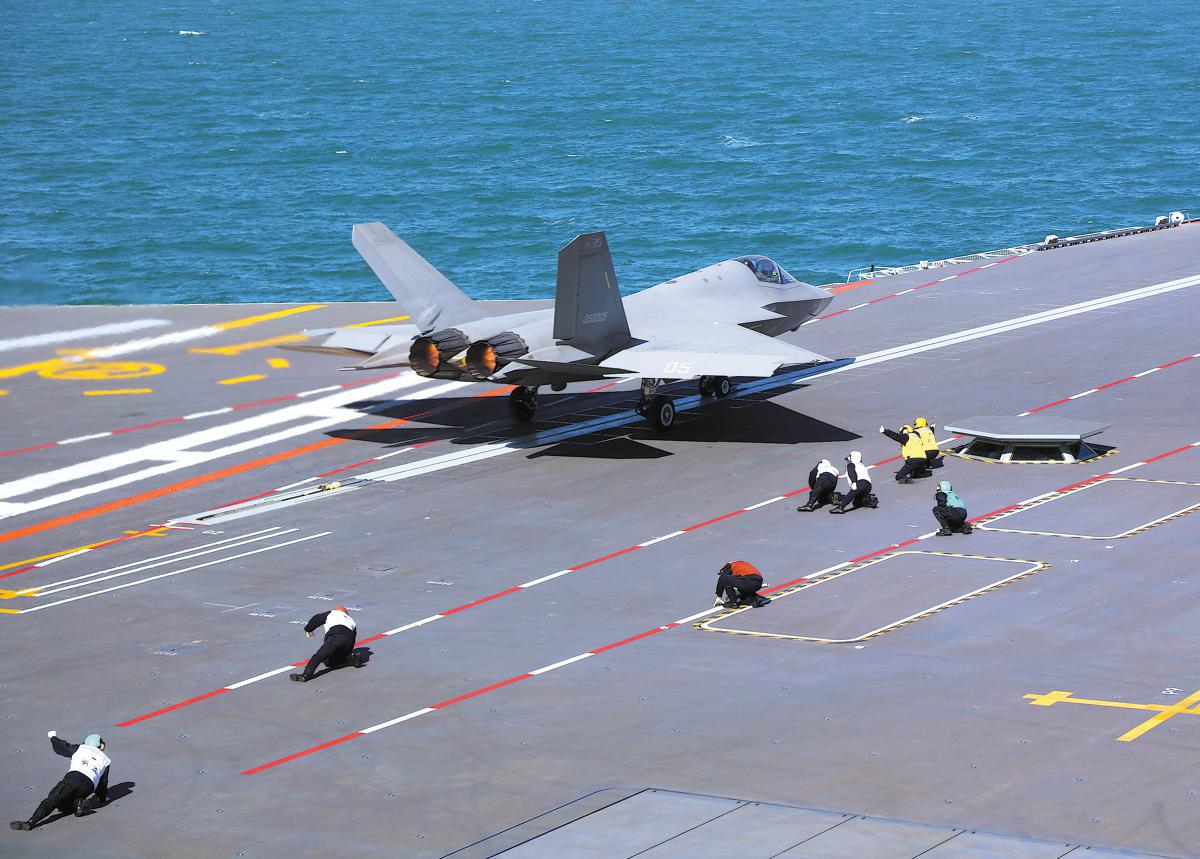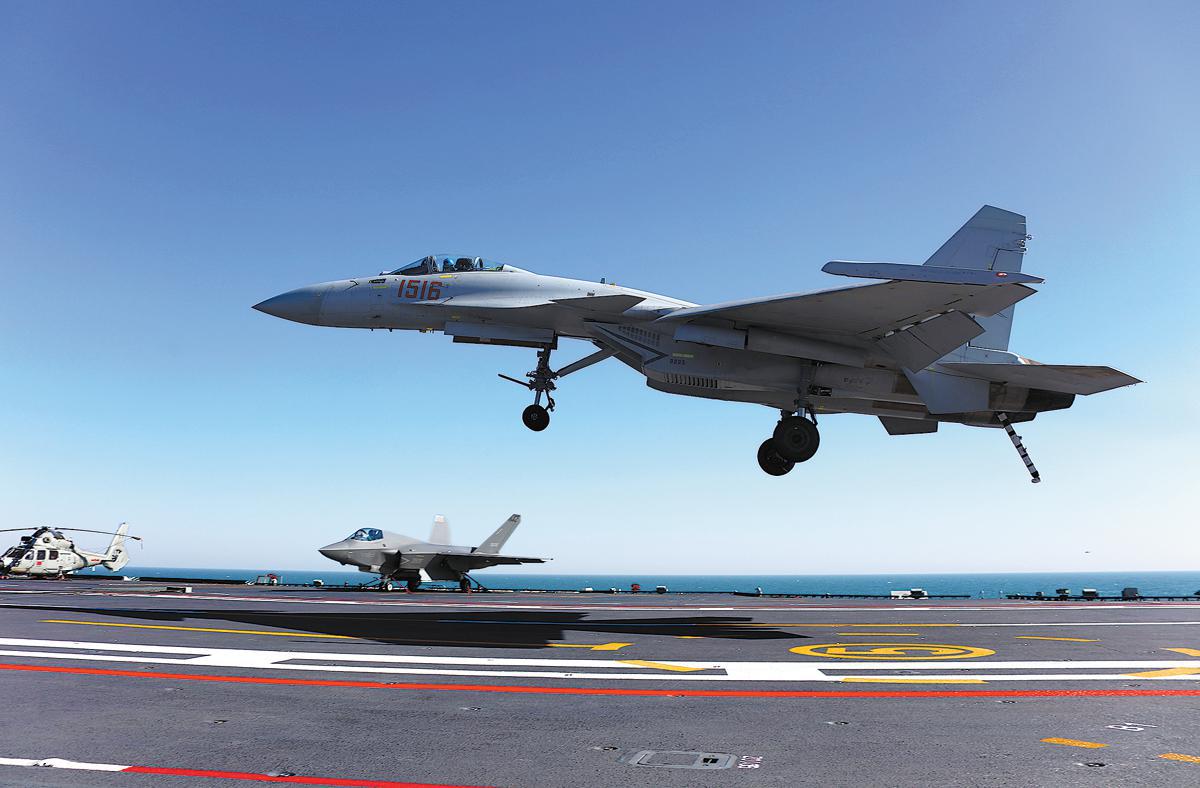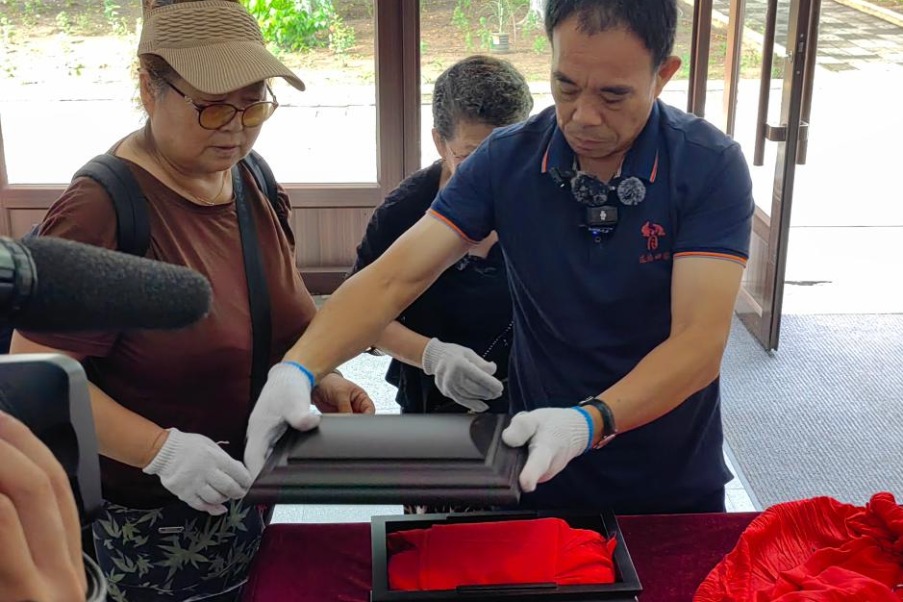Carrier's milestone moment: Electromagnetic launches


The People's Liberation Army Navy has made a major stride in the development of its carrier force, successfully launching and recovering three types of aircraft — the J-35 and J-15T naval fighter jets and the KJ-600 early-warning and control plane — from its supercarrier CNS Fujian using cutting-edge electromagnetic systems.
This makes the Fujian the world's second aircraft carrier capable of using electromagnetic catapult and arresting gear systems to facilitate aircraft operations.
According to the Navy, the three models had made a number of takeoff and landing operations in tests and training voyages by the Fujian before the Victory Day parade on Sept 3 in Beijing, when all of the aircraft took part in a ceremonial flyby. The parade also marked the public debut of the J-35, the Navy's first stealth fighter, and the KJ-600, the service's first fixed-wing early-warning and control plane deployed on carriers.
The Navy said the launch and recovery operations have verified that the vessel's catapult and arresting gear systems, which were independently developed by China and use electromagnetic technology, can work smoothly with multiple types of carrier-based aircraft.
The development also indicated that the Fujian has initial full-deck operation capability, which lays a solid foundation for the subsequent integration of carrier-based aircraft into the carrier strike group, the Navy noted.
In an apparent endeavor to spark enthusiasm from the public, the Navy published a host of video clips that show the takeoff and landing moments from almost every angle. The effort paid off, with a great number of internet users liking, reposting and forwarding them.
The Fujian, classified as Type 003, was officially launched on June 17, 2022, at China State Shipbuilding Corp's Jiangnan Shipyard, appearing as the pinnacle of Chinese naval technology. Since then, the vessel, which displaces more than 80,000 metric tons of water, has undergone several sea trials and is nearly ready to be commissioned.
Unlike its predecessors — the CNS Liaoning and CNS Shandong, which use ski-jump ramps for aircraft takeoff and conventional arresting gear for jet recovery — the Fujian is the first Chinese carrier to adopt the high-efficiency electromagnetic launch and recovery systems. These are the most critical components of a supercarrier, as they are responsible for enabling takeoff and landing of carrier-based fixed-wing aircraft.
Designed by Aviation Industry Corp of China's Shenyang Aircraft Design and Research Institute for carrier deployment, the J-35 can be launched by both the ski-jump takeoff system used by the Liaoning and the Shandong, and the electromagnetic catapult on the Fujian.
The radar-evading jet is characterized by its low-observable design, state-of-the-art manufacturing techniques, a world-class radar and cutting-edge sensors, as well as a wide range of munition options.

The J-15T is a variant of the J-15 carrier-based combat plane that has been deployed on the Liaoning and the Shandong, with modifications specifically designed for electromagnetic systems-based operations.
The KJ-600 is the fourth fixed-wing early-warning and control plane deployed by the Navy, and also the largest, heaviest and most capable of its kind to be used on Chinese aircraft carriers. It was co-developed by aircraft designers at AVIC and radar researchers from China Electronics Technology Group Corp.
Wang Yanan, chief editor of Aerospace Knowledge magazine, said that the success of the aircraft's takeoff and landing operations means that the electromagnetic launch and recovery systems are reliable and can be used at any time.
"Chinese scientists, designers and engineers must have overcome many obstacles in developing the rapid electromagnetic-energy storage and discharging instruments, which are the most difficult and challenging parts in the electromagnetic systems' research," he said.
Wang said that compared with ski-jump ramps and steam-powered catapults, the electromagnetic catapult boasts greater power, shorter preparation time and less reliance on resources.
"The electromagnetic catapult is able to launch fully fueled, fully armed fighter jets and large planes such as the KJ-600. By comparison, the ski-jump ramp has many restrictions on an aircraft's weight, so that combat jets can only bring certain amounts of fuel and weapons, and that means their combat capability is limited and the carrier's launch efficiency is not so good. With the use of an electromagnetic catapult, all of these problems have gone on the Fujian," the editor said.
He also said that steam-powered catapults need a lot of fresh water for operations, which is a huge burden on the carrier, while the electromagnetic system needs no fresh water, thereby saving a large amount of space and weight on the vessel.

- Carrier's milestone moment: Electromagnetic launches
- Trial of 21-member cross-border crime group ends in Shenzhen
- Shanghai Jiao Tong Uni fosters collaborative research through China-Oceania forum
- Global scientists gather at 2025 Pujiang Innovation Forum in Shanghai
- UNESCO inaugurates STEM education institute in Shanghai
- China, US should avoid conflict, defense chief says





































